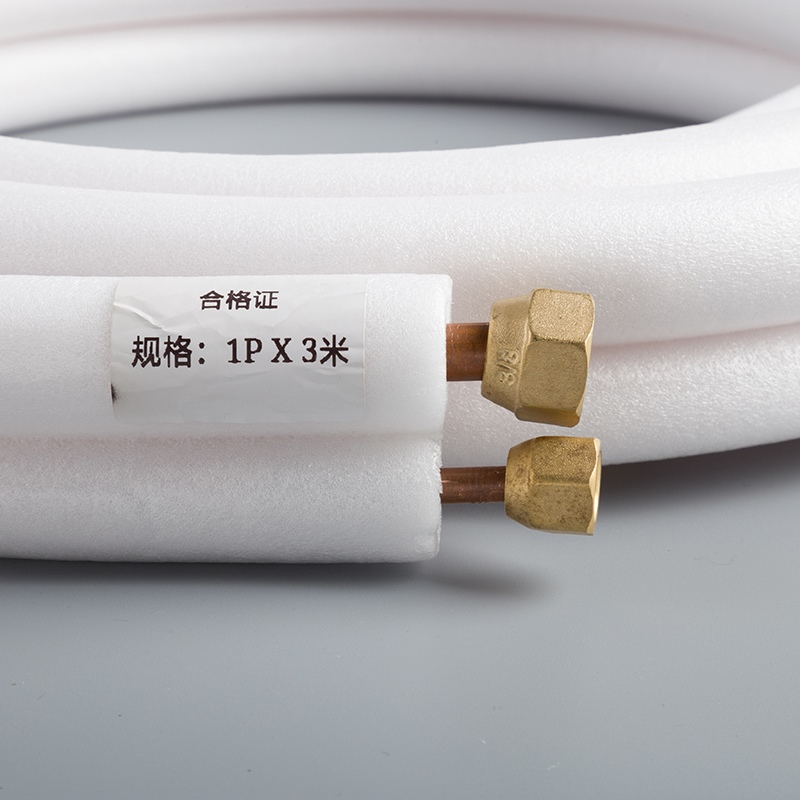Step-by-Step Guide to Refrigeration Maintenance

Write a 'Guides' blog post on 'Guide to Refrigeration Maintenance'
Refrigeration maintenance plays a pivotal role in ensuring the optimal performance and longevity of cooling systems. By adhering to a structured maintenance regimen, efficiency improvements of 10-30% can be achieved, especially in systems that have not been recently optimized for operation. This comprehensive Guide to Refrigeration Maintenance aims to enlighten both novice and seasoned individuals on the intricacies of refrigeration upkeep. Understanding the significance of preventive maintenance is crucial as it directly impacts the lifespan of refrigeration units, underscoring the necessity for regular care and attention.
Understanding Refrigeration Systems
Refrigeration, a fundamental process in cooling systems, involves the transfer of heat from one location to another. This process is essential for maintaining optimal temperatures within refrigeration units. Let's delve into the core components that constitute a refrigeration system.
What is Refrigeration?
Definition and Basic Principles
Refrigeration serves as a mechanism to remove heat from a confined space, resulting in lower temperatures within that environment. The basic principle revolves around the extraction of thermal energy to create a cooling effect. By understanding this principle, individuals can grasp the essence of how refrigeration systems operate efficiently.
Types of Refrigeration Systems
Vapor-Compression Systems: These systems utilize a compressor to pump refrigerant through the system, facilitating heat exchange and cooling.
Absorption Refrigeration: In these systems, heat drives the refrigeration cycle instead of mechanical work, offering an alternative approach to cooling mechanisms.
Components of a Refrigeration System
Compressor
The compressor plays a pivotal role in pressurizing the refrigerant gas, initiating the cycle that enables heat transfer processes within the system.
Condenser
Within the refrigeration system, the condenser facilitates the conversion of high-pressure gas into liquid form by dissipating heat absorbed during the compression phase.
Evaporator
The evaporator component absorbs heat from its surroundings, causing the refrigerant liquid to evaporate and produce a cooling effect within the designated space.
Expansion Valve
Acting as a regulator for refrigerant flow, the expansion valve controls and reduces pressure levels to facilitate efficient cooling processes in refrigeration units.
Routine Maintenance Tasks

Daily Maintenance
Regularly checking temperature settings is a fundamental aspect of refrigeration maintenance. This task ensures that the unit operates at the optimal temperature, preserving the quality of stored items. Additionally, inspecting for leaks is crucial to prevent potential issues that could lead to system malfunctions or inefficiencies.
Weekly Maintenance
On a weekly basis, it is essential to conduct cleaning coils to remove dust and debris accumulation. This simple yet effective task enhances the efficiency of the refrigeration system by promoting proper heat exchange. Moreover, checking refrigerant levels regularly helps in maintaining the correct balance within the system, preventing disruptions in cooling performance.
Monthly Maintenance
Monthly maintenance tasks are pivotal for ensuring the longevity of refrigeration systems. Inspecting electrical connections on a monthly basis helps identify any loose connections or signs of wear that could pose safety risks or impact functionality. Furthermore, lubricating moving parts such as hinges and handles prevents unnecessary friction and ensures smooth operation.
Troubleshooting Common Issues

Identifying Common Problems
Inadequate Cooling
Refrigeration systems experiencing inadequate cooling may be attributed to various factors. One common issue is the accumulation of dust and debris on the condenser coils, hindering heat dissipation. Additionally, low refrigerant levels can impede the cooling process, leading to suboptimal performance. Understanding these root causes is essential for effective troubleshooting.
Unusual Noises
Unusual noises emanating from a refrigeration unit can indicate underlying issues that require attention. These noises could stem from a malfunctioning compressor or fan motor, disrupting the normal operation of the system. By identifying and addressing these unusual sounds promptly, further damage can be prevented.
Basic Troubleshooting Steps
Checking Power Supply
Verifying the power supply to the refrigeration unit is crucial in diagnosing operational issues. A disrupted power source can result in system failures and inadequate cooling. Utilizing diagnostic tools like multimeters can aid in accurately assessing electrical connections and ensuring proper functionality.
Inspecting Thermostat
The thermostat serves as a vital component in regulating temperature settings within a refrigeration system. An improperly calibrated thermostat can lead to erratic cooling cycles or inconsistent temperatures. Regularly inspecting and calibrating the thermostat ensures optimal performance and energy efficiency.
Advanced Maintenance and Repairs
When to Call a Professional
In the realm of refrigeration maintenance, recognizing complex issues is paramount to ensuring the seamless operation of cooling systems. Appliance Repair Technicians emphasize the significance of staying updated on the latest technologies and industry trends to tackle intricate problems effectively. By incorporating continuous learning into their routine, professionals can adeptly navigate challenging scenarios and provide optimal solutions.
Recognizing Complex Issues
When faced with intricate refrigeration malfunctions, it is crucial to discern the underlying complexities that may require professional intervention. Appliance Repair Technicians stress the importance of utilizing advanced diagnostic technology to pinpoint root causes accurately. By staying abreast of the latest appliance technology and repair techniques, technicians can efficiently troubleshoot and resolve complex issues with precision.
Safety Considerations
Prioritizing safety considerations in advanced maintenance and repairs is non-negotiable. Appliance Repair Technicians underscore the need for handling difficult situations with caution and expertise. By adhering to industry safety protocols and guidelines, professionals ensure not only their well-being but also the longevity and efficiency of refrigeration systems.
DIY Repairs
While some maintenance tasks can be handled independently, there are instances where calling a professional becomes imperative for comprehensive repairs. Appliance Repair Technicians recommend individuals familiarize themselves with basic troubleshooting steps before attempting DIY repairs. By understanding fundamental repair techniques like replacing a thermostat or fixing a leak, individuals can address minor issues promptly.
Replacing a Thermostat
The process of replacing a thermostat involves meticulous attention to detail and technical proficiency. Appliance Repair Technicians advocate for following manufacturer guidelines and safety precautions when undertaking this task. By carefully calibrating the new thermostat and ensuring proper installation, individuals can restore optimal temperature control within refrigeration units.
Fixing a Leak
Addressing leaks in refrigeration systems demands precision and expertise to prevent further damage or inefficiencies. Appliance Repair Technicians stress the importance of identifying leak sources accurately before initiating repairs. By using specialized tools and sealants recommended by manufacturers, individuals can effectively seal leaks and maintain system integrity.
Energy Efficiency and Standards
Importance of Energy Efficiency
Enhancing energy efficiency in refrigeration systems is paramount for sustainable operation and cost savings. By adopting energy-efficient practices, businesses can significantly reduce operational expenses and minimize their environmental impact. Let's explore the benefits of prioritizing energy efficiency in refrigeration maintenance.
Benefits of Energy-Efficient Systems
Reduced Operating Costs: Energy-efficient refrigeration systems consume less power, leading to lower utility bills and decreased overall operational expenses.
Environmental Sustainability: Opting for energy-efficient models helps reduce greenhouse gas emissions and promotes eco-friendly practices within the industry.
Enhanced Performance: Energy-efficient systems are designed to operate optimally, ensuring consistent cooling performance and temperature control.
Long-Term Savings: Investing in energy-efficient refrigeration solutions yields long-term benefits by prolonging equipment lifespan and minimizing repair costs.
Energy-Saving Tips
Implement Regular Maintenance: Scheduled maintenance tasks such as cleaning coils, checking refrigerant levels, and inspecting electrical connections contribute to improved energy efficiency.
Utilize Programmable Thermostats: Programmable thermostats enable precise temperature control, reducing unnecessary cooling cycles and conserving energy.
Opt for LED Lighting: Switching to LED lighting within refrigeration units reduces energy consumption compared to traditional lighting fixtures.
Consider Energy Star Certified Products: Energy Star certified refrigeration equipment meets stringent energy efficiency standards, ensuring optimal performance while minimizing electricity usage.
Industry Standards and Regulations
Maintaining compliance with industry standards and regulations is essential for upholding quality assurance and safety protocols within the refrigeration sector. Understanding the regulatory landscape ensures that businesses operate ethically while adhering to established guidelines.
Compliance Requirements
EPA Regulations: The Environmental Protection Agency (EPA) sets forth regulations governing refrigerant use, leak detection, and disposal practices to mitigate environmental impact.
ASHRAE Standards: The American Society of Heating, Refrigerating, and Air Conditioning Engineers (ASHRAE) establishes guidelines for system design, installation, and maintenance to optimize energy efficiency.
Certification Programs
Seek AHRI Certification: The Air-Conditioning, Heating, & Refrigeration Institute (AHRI) offers certification programs that validate product performance based on industry standards.
Consider LEED Certification: Leadership in Energy and Environmental Design (LEED) certification recognizes sustainable building practices that prioritize energy efficiency in refrigeration systems.
In summarizing the comprehensive Guide to Refrigeration Maintenance, it is crucial to emphasize the significance of regular upkeep for optimal system performance. By adhering to routine maintenance tasks like cleaning coils and inspecting electrical connections, businesses can enhance energy efficiency and prolong equipment lifespan. Final tips include utilizing programmable thermostats for precise temperature control and considering Energy Star certified products for sustainable operation. Stay proactive with maintenance to prevent costly repairs and ensure seamless refrigeration functionality.
See Also
Effortless Guide: Installing AC Copper Tubing Like a Pro
Comprehensive Manual for Preserving Copper Pipe Performance
Best 5 Strategies for Copper Pipe Coil Upkeep


